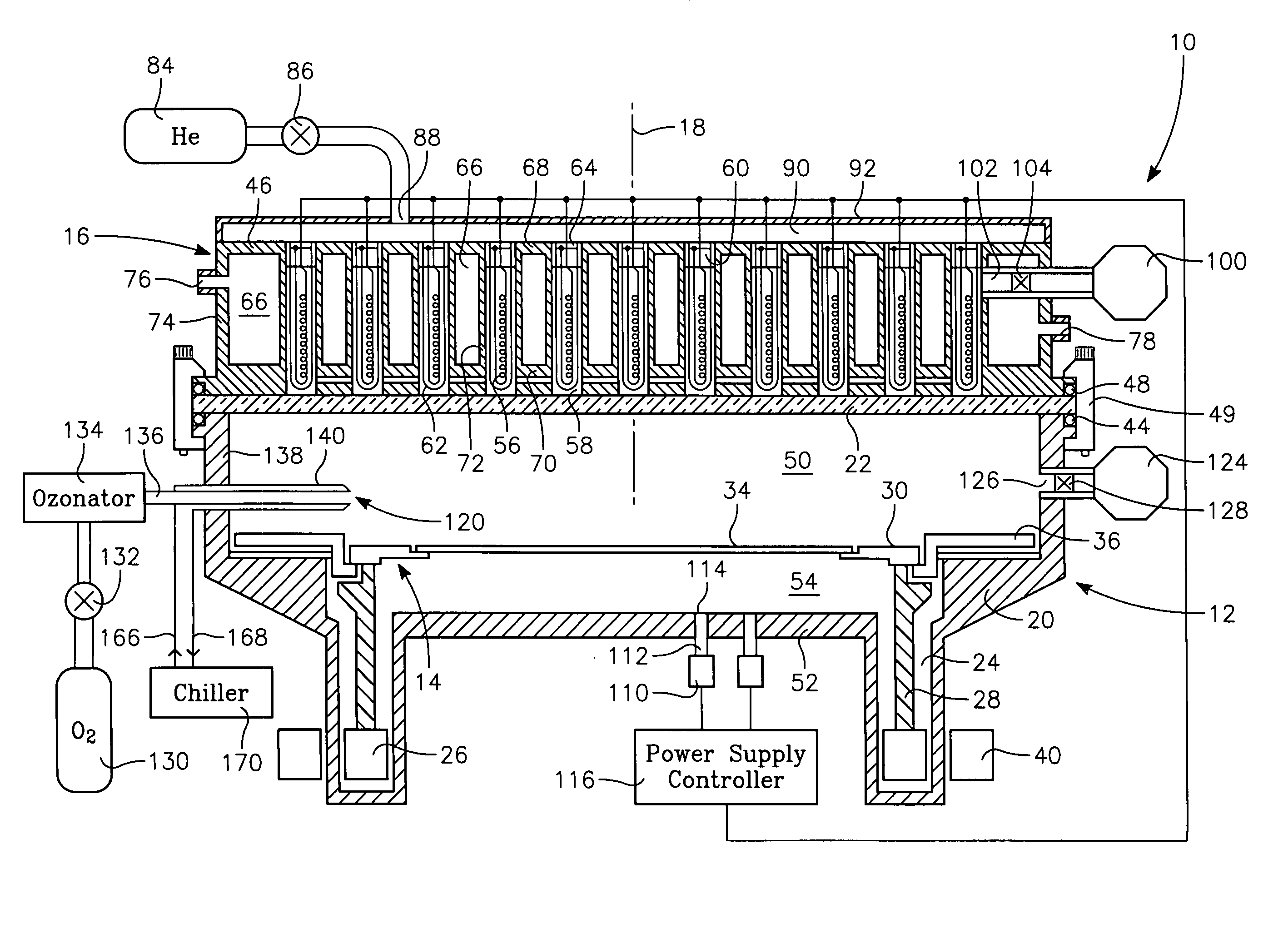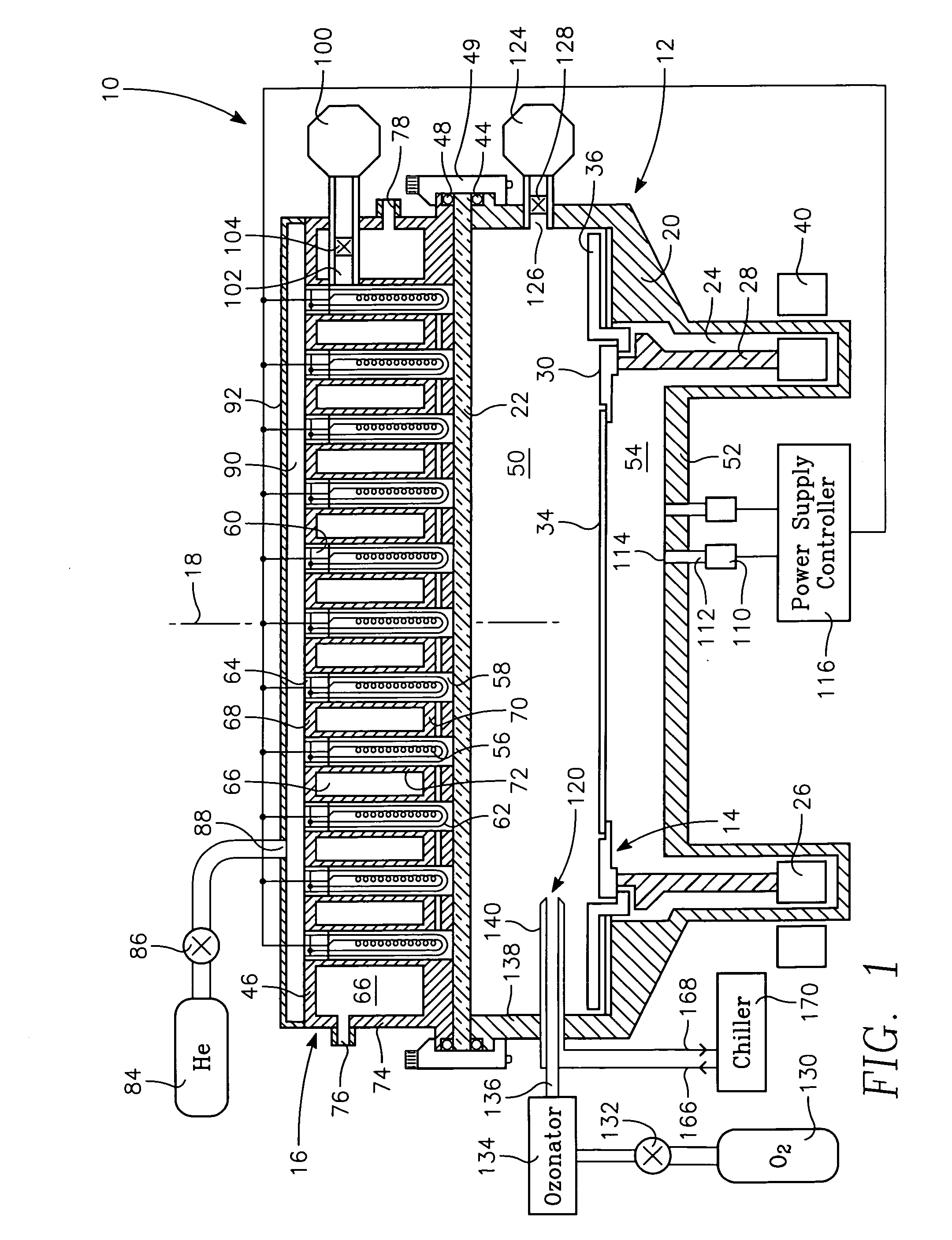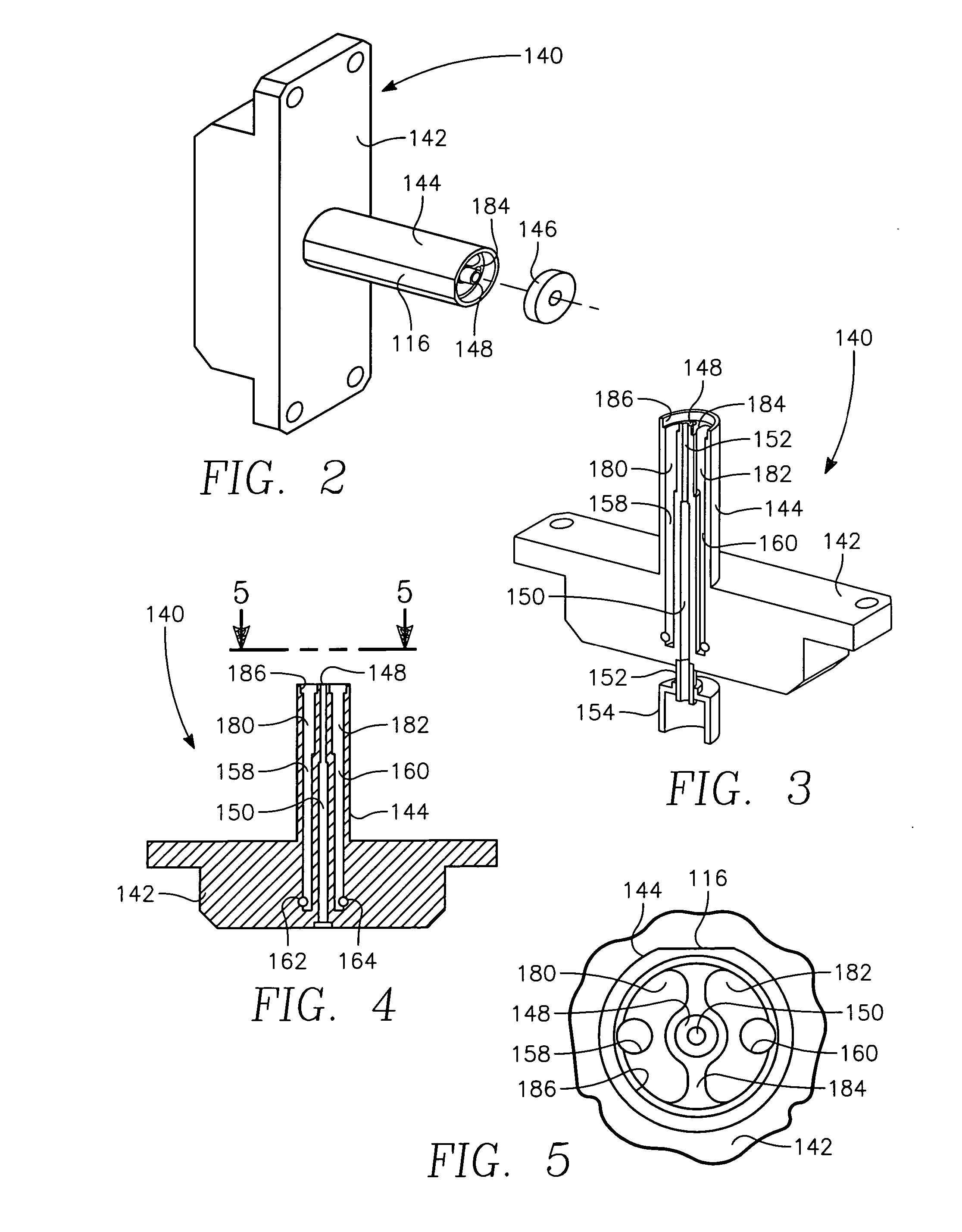Thermal oxidation of silicon using ozone
a technology of ozone and silicon, applied in the direction of furnaces, muffle furnaces, applications, etc., can solve the problems of ozone-assisted oxidation, different constraints on silicon oxidation processes, and damage to semiconducting silicon and dielectric layers
- Summary
- Abstract
- Description
- Claims
- Application Information
AI Technical Summary
Benefits of technology
Problems solved by technology
Method used
Image
Examples
Embodiment Construction
[0026] The invention in part concerns the thermal oxidation of silicon or other materials in the presence of ozone in an RTP (rapid thermal processing) chamber.
[0027]FIG. 1 schematically illustrates in cross section an RTP chamber 10 described by Ranish et al. in U.S. Pat. No. 6,376,804, incorporated herein by reference and generally representative of the Radiance RTP chamber available from Applied Materials, Inc. of Santa Clara, Calif. The RTP chamber 10 includes a vacuum chamber 12, a wafer support 14 located within the chamber 12, and a lamphead 16 or heat source assembly located on the top of the chamber 12, all generally symmetrically arranged about a central axis 18.
[0028] The vacuum chamber 12 includes a chamber body 20 and a window 22 resting on the chamber body 20. The window 22 is composed of a material that is transparent to infrared light, for example, clear fused silica quartz.
[0029] The chamber body 20 may be made of stainless steel and be lined with a quartz liner ...
PUM
| Property | Measurement | Unit |
|---|---|---|
| temperature | aaaaa | aaaaa |
| temperature | aaaaa | aaaaa |
| temperature | aaaaa | aaaaa |
Abstract
Description
Claims
Application Information
 Login to View More
Login to View More - R&D
- Intellectual Property
- Life Sciences
- Materials
- Tech Scout
- Unparalleled Data Quality
- Higher Quality Content
- 60% Fewer Hallucinations
Browse by: Latest US Patents, China's latest patents, Technical Efficacy Thesaurus, Application Domain, Technology Topic, Popular Technical Reports.
© 2025 PatSnap. All rights reserved.Legal|Privacy policy|Modern Slavery Act Transparency Statement|Sitemap|About US| Contact US: help@patsnap.com



